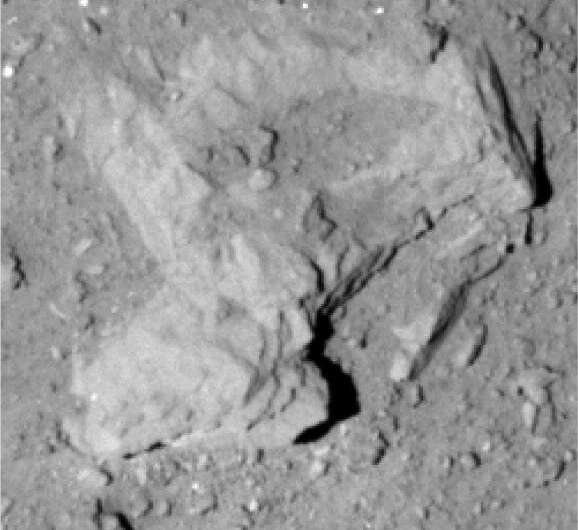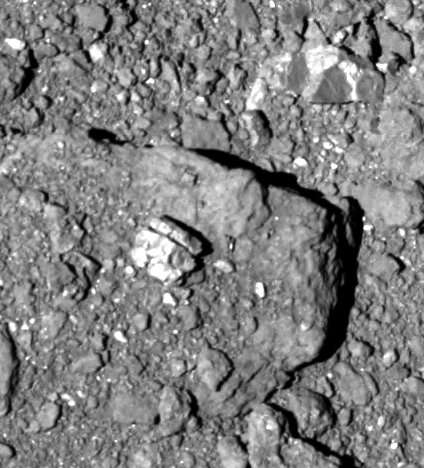This research looks specifically at data taken while Ryugu was in opposition to the spacecraft and Sun, and utilizes Hayabusa2's near infrared spectrometer, NIRS3, and Optical Navigation Camera, ONC, measurements and observations. PSI Deputy Director and Senior Scientist Deborah Domingue led this work, which appears in the latest issue of the Planetary Science Journal, and included PSI researchers Faith Vilas and Lucille Le Corre.
In June 2018, the Japan Aerospace Exploration Agency (JAXA) Hayabusa2 mission rendezvoused with the near Earth asteroid Ryugu. This spacecraft was on a mission to study and sample this example from the early Solar System, and of the kind of object that might one day cross Earth's path too close for comfort. (There are no objects currently identified that pose a risk to Earth.)
Hayabusa2 studied Ryugu with both a camera that takes photos like you might take with your phone, and also with a spectrometer that spreads light out into all its various colors like a prism creating a rainbow. This data can be used to understand what different materials and sizes of materials compose an asteroid.
NIRS3 and ONC revealed Ryugu to be a dark object, built of rubble of a variety of sizes, but similar composition throughout—very similar to a carbonaceous chondrite meteorite. "Images of Ryugu show a surface that is very coarsely-grained, like pebbles on a rocky beach. Our spectral analysis shows that there is a finer-grained component as well—think dust—that is mixed in," Domingue said.

This data was taken under very specific conditions, when the spacecraft had the Sun to its back and Ryugu shining bright in front of its instruments. This alignment is called opposition. With the asteroid opposite the spacecraft from the Sun, Ryugu was particularly well illuminated to enhance the specific effects of dust interacting with light. While the amount of dust present wouldn't impress anyone with a dusty old barn, it was enough to catch the attention of these researchers. "The Mobile Asteroid Surface Scout (MASCOT) lander did not see any evidence for dust; however the two sample collection activities did show evidence for dust and a friable surface. The presence of dust, and its abundance, is under debate. Our analyses fall under the 'there's some dust present' side of the debate," Domingue said.
MASCOT was one of the three small robots Hayabusa2 carried with it to explore Ryugu. This German aerospace lander explored autonomously for 17 hours and found a very porous surface, something like pumice stone, but it didn't find dust.
Understanding Ryugu is made all the more difficult by its complexity. While the region studied at opposition appeared homogeneous, this data set doesn't describe the entirety of the asteroid. Over its long history, the asteroid has experienced heating and radiation from the Sun and myriad collisions with objects large and small. Each interaction has left its own mark. "The surface of Ryugu is complex," said Domingue. "There are variations, and these variations are a result of non-uniform interactions with the space environment—from micro to macro scale impacts in addition to alteration from the Sun."
It is easy to imagine that every snowflake is different, but the reality is that every asteroid is also different, presenting its own composition, weathering, and pattern of impacts.
This work appears in the Planetary Science Journal and is titled "Spectroscopic Properties of 162173 Ryugu's Surface from the NIRS3 Opposition Observations," and it is just part of Ryugu's story. The paper is part of two companion publications, one led by Domingue and the other by Japanese colleague Yasuhiro Yakota, and together they highlight the efforts of their team in deciphering the physical nature of Ryugu's surface.
Explore further



